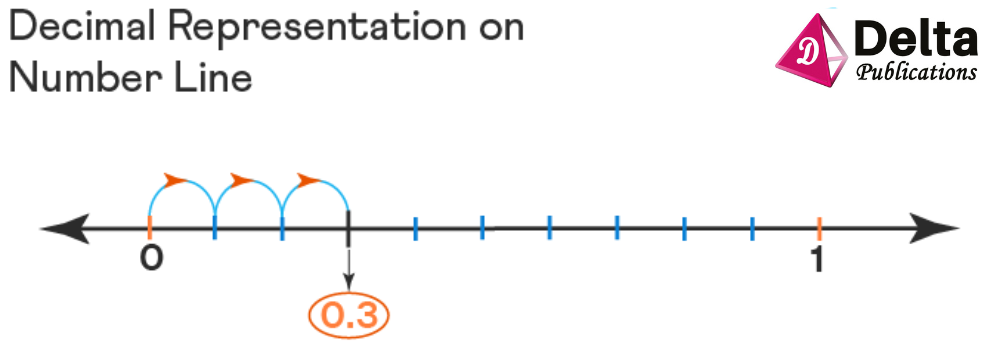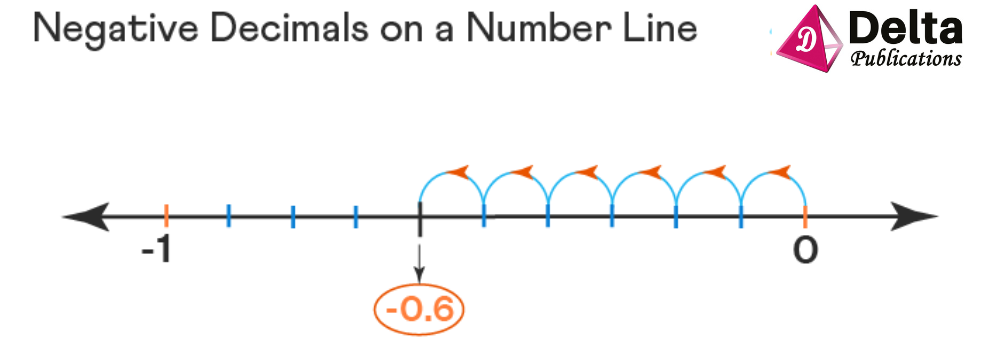Decimal number lines
key notes :
Decimal representation on a number line is very similar to the representation of fractions. The left-hand side of 0 on a number line represents the negative region and the right-hand side of 0 represents the positive region.
Let us represent 0.3 on a number line using the following steps shown below.
Step I: Draw a number line by marking 0 as the reference.
Step II: Identify the integers between which the decimal lies and mark them. 0.3 lies between 0 and 1.
Step III: We will now be making 10 divisions between the integers 0 and 1.
Step IV: Now, we will be moving towards the right starting from 0 by the number of steps equivalent to the right-most digit value after the decimal point. For 0.3 we will be moving 3 places towards the right.

Representation of Negative Decimals on Number Line
For representing negative decimals on a number line, we follow the same set of rules as described above. The only difference is that the overall operation will be done towards the left-hand side of the origin, i.e. 0 on the number line as we are dealing with negative numbers.
Let us represent – 0.6 on a number line.
Step I: We know that – 0.6 lies between 0 and – 1. Thus the range of the integers will be 0 and -1.
Step II: We will be making 10 divisions between 0 and -1.
Step III: To plot – 0.6, we will take 0 as the reference and move 6 steps towards the left as shown below.

Learn with an example
Find the value of t. Write your answer as a decimal number.

t = ______
The number line goes from 0 to 1 with ten equal intervals. Each interval represents 0.1.
Count the intervals from 0 to t. There are 6 intervals. t is 0.6 greater than 0.
t = 0.6

Find the value of f. Write your answer as a decimal number.

f = _____
The number line goes from 0 to 1 with ten equal intervals. Each interval represents 0.1.
Count the intervals from 0 to f. There are 2 intervals. f is 0.2 greater than 0.
f = 0.2

Find the value of m. Write your answer as a decimal number.

m = ______
The number line goes from 0 to 1 with ten equal intervals. Each interval represents 0.1.
Count the intervals from 0 to m. There are 2 intervals. m is 0.2 greater than 0.
m = 0.2

Let’s practice!

